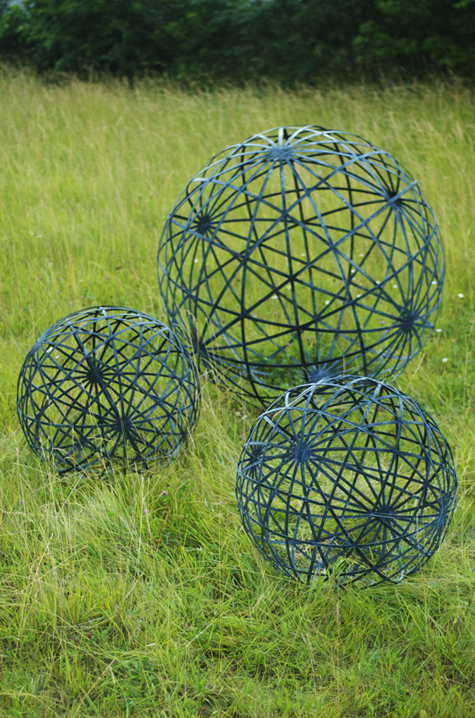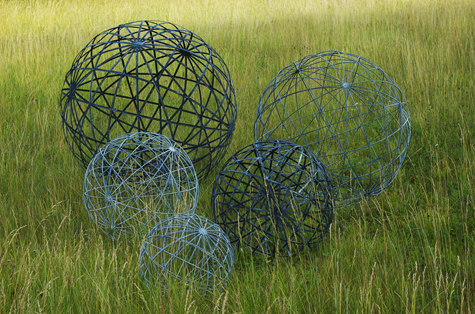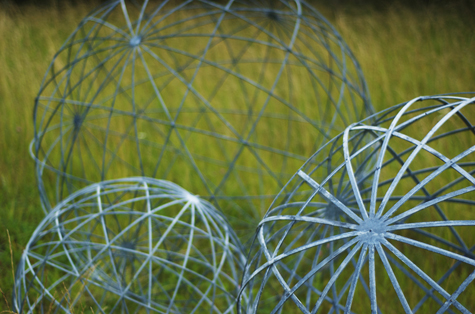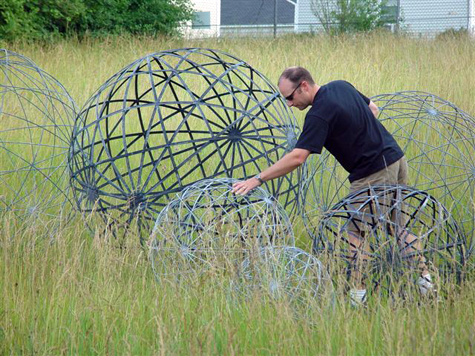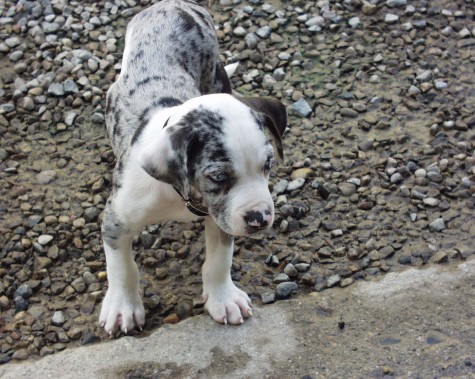
When Troy showed up at work with this eight week old Catahoulee leopard cur (yes that’s what Louisiana hunting people call these hunting dogs) he had named Annie, we were all oohs and ahhs. Her eyes were raptor blue; her toenails looked like he had painted them a luscious shade of white pearl. Her coat that looks to me like gravel is formally known as blue Merle. Her eyelashes were white-wow. She gave no hint at this stage of the hound she would become.
 Troy is a gardener of exceptional ability, in addition to his gift as a sculptor. Growing up on a farm on the west side of Michigan, he grew a giant vegetable garden, ran a blueberry farm, did surveying, hunted, fished, and walked the woods. He came by his skills as a naturalist, naturally. He sculpted for me in concrete; this two-headed fox bench is his work. Annie went everywhere with him, including to the studio.
Troy is a gardener of exceptional ability, in addition to his gift as a sculptor. Growing up on a farm on the west side of Michigan, he grew a giant vegetable garden, ran a blueberry farm, did surveying, hunted, fished, and walked the woods. He came by his skills as a naturalist, naturally. He sculpted for me in concrete; this two-headed fox bench is his work. Annie went everywhere with him, including to the studio.
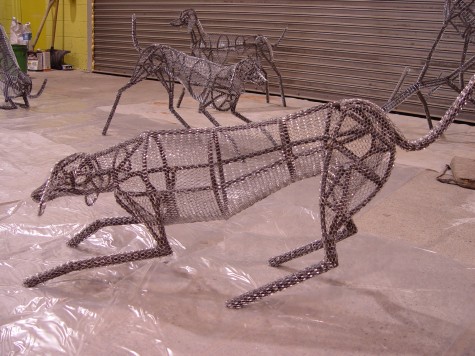
Troy would produce a body of work, and then show up at my office; “what do you want me to make now?”. I was watching Annie run her self designated obstacle course around the pots and up on the wall, and back, down and over a iron cistern and so on; she is a miracle in motion. Naturally, I translated what my eyes were watching; “what about a pack of hounds? Make me a pack of hounds”. A week later I was looking at a pack of welded steel rebar and steel mesh frames. A whole lot of dogs-working, at attention, sleeping, skulking, howling, moving; dogs doing what they do.
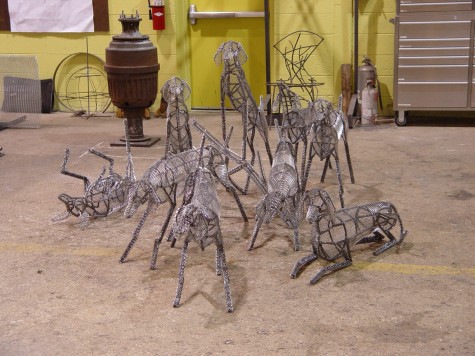 These very gestural and simple structures provide strength for the concrete and mortar to come. He squishes and packs concrete around these frames; the strength that a garden sculpture needs first and foremost, comes first. But I could tell from these frames I was going to like what came next. The outside mortar layer he hand carves.
These very gestural and simple structures provide strength for the concrete and mortar to come. He squishes and packs concrete around these frames; the strength that a garden sculpture needs first and foremost, comes first. But I could tell from these frames I was going to like what came next. The outside mortar layer he hand carves.
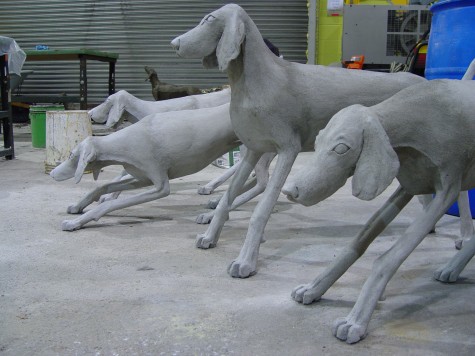 I was not prepared for how much I liked them. His sculptures of hounds are not about a biologically correct reproduction, they are about the heart and soul of his hound Annie. I was astonished by how much energy, motion and fluidity he managed to wring from a marriage of steel, and hundred pound sacks of concrete. This explication aside, these hounds won me over.
I was not prepared for how much I liked them. His sculptures of hounds are not about a biologically correct reproduction, they are about the heart and soul of his hound Annie. I was astonished by how much energy, motion and fluidity he managed to wring from a marriage of steel, and hundred pound sacks of concrete. This explication aside, these hounds won me over.
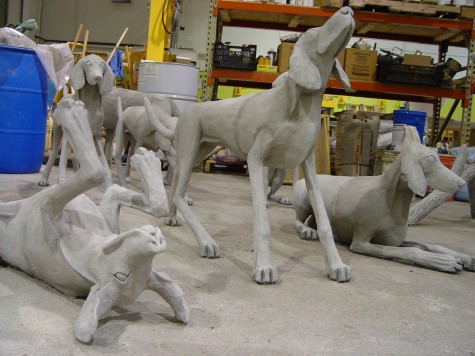 One hound was on his back, sunning and scratching, in the garden. Another was howling at the moon as if he had ten minutes to live. Yet another was tentatively down, those back legs were tucked under in such a position he could be cruising at a second’s notice.
One hound was on his back, sunning and scratching, in the garden. Another was howling at the moon as if he had ten minutes to live. Yet another was tentatively down, those back legs were tucked under in such a position he could be cruising at a second’s notice.
 This sculpture makes clear the legs that make for balance, and the legs that carry the weight. The position of the ears suggest this hound just shook his head, and looked up towards the moon. Most garden sculpture leaves me cold; these hounds are right at home in a landscape.
This sculpture makes clear the legs that make for balance, and the legs that carry the weight. The position of the ears suggest this hound just shook his head, and looked up towards the moon. Most garden sculpture leaves me cold; these hounds are right at home in a landscape.
 There was some discussion with Troy regarding sculpture that relies on the environment to be complete. He said, “don’t give me the history, just tell me what you need”. So ok fine, I asked him for a hound barking up a tree-the tree would be supplied by whomever took this barking dog home. She does have a good tree, and this hound has a good home.
There was some discussion with Troy regarding sculpture that relies on the environment to be complete. He said, “don’t give me the history, just tell me what you need”. So ok fine, I asked him for a hound barking up a tree-the tree would be supplied by whomever took this barking dog home. She does have a good tree, and this hound has a good home.
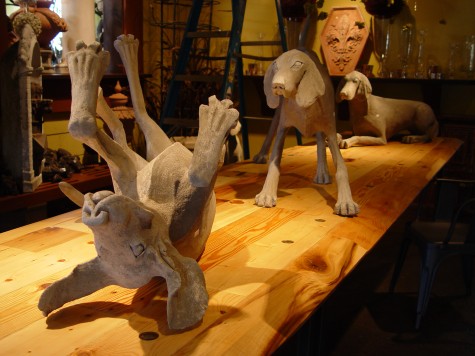 Troy’s sculptures of hounds could be in or out, up or down, on a sidewalk, in a bed, on a wall. I have placed 16 of them; they all moved away from me. When the garden wanes, I think about how much I value the sculpture that enchants me, all year long. His sculpture-creature comfort.
Troy’s sculptures of hounds could be in or out, up or down, on a sidewalk, in a bed, on a wall. I have placed 16 of them; they all moved away from me. When the garden wanes, I think about how much I value the sculpture that enchants me, all year long. His sculpture-creature comfort.
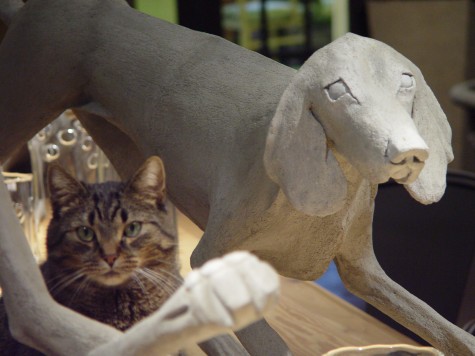
MCat moved in some years ago; we heard him mewing under a stack of Italian terra cotta pots. He could not have been much more than four weeks old. When the hounds first came to the shop, he moved in with them. He slept on this table every night for six weeks straight. Enough said, about the hounds.

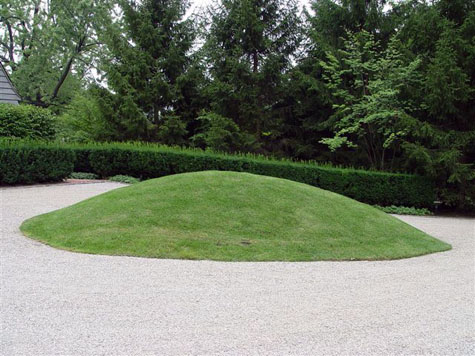
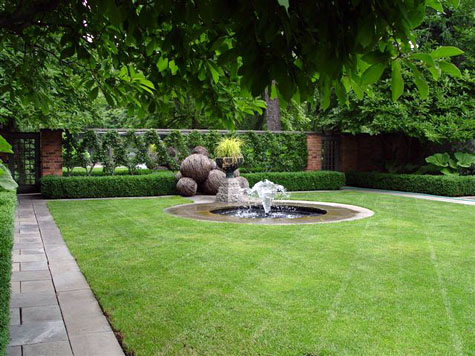
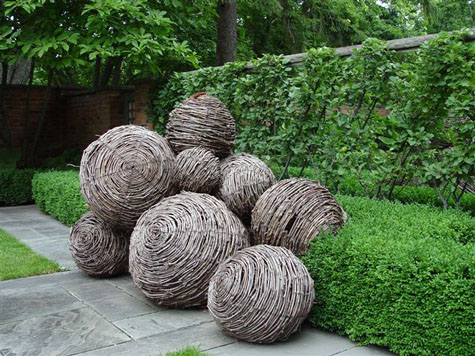
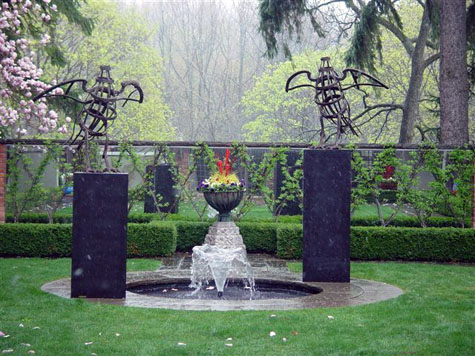
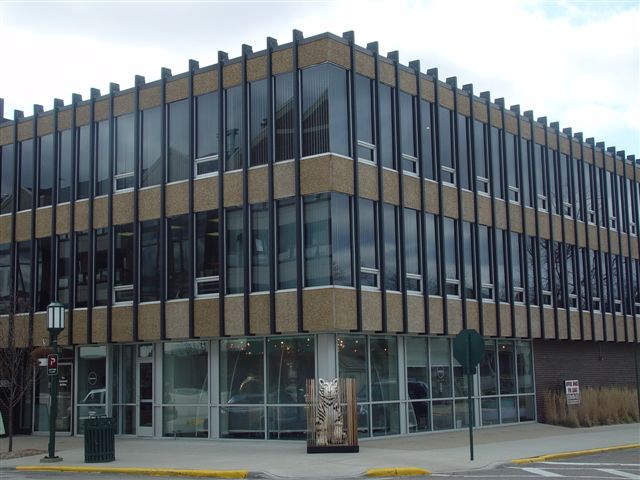
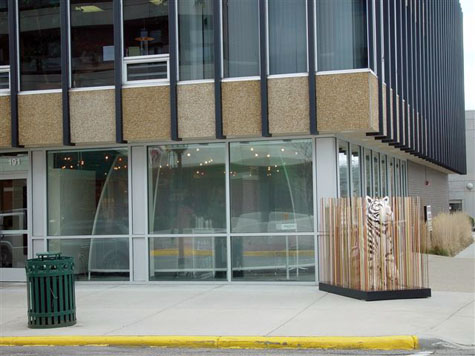
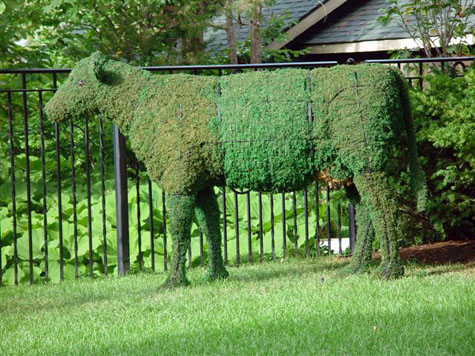
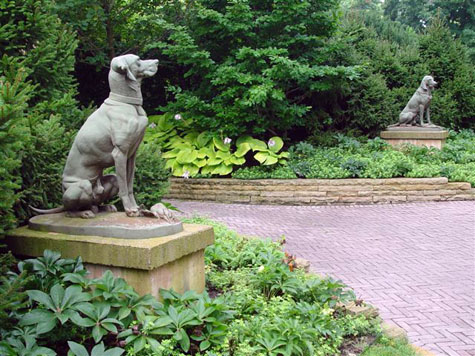

 Though I am fond of almost every geometric shape, I am especially enamored of spheres. Spheres in any material or arrangement.
Though I am fond of almost every geometric shape, I am especially enamored of spheres. Spheres in any material or arrangement.


